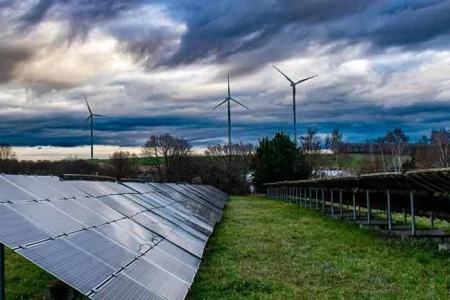Biden Sets Ambitious GHG Target Amid Trump Plans

In December 2024, President Joe Biden's administration set an ambitious target to reduce U.S. greenhouse gas (GHG) emissions by 61% to 66% by 2035, compared to 2005 levels. This goal aligns with the Paris Agreement's framework, which requires participating nations to update their emission reduction commitments every five years.
Biden's Climate Commitment
The newly established target represents a significant enhancement over the previous 2021 goal of a 50% to 52% reduction by 2030. The administration emphasized that achieving this 2035 target would keep the U.S. on a trajectory toward net-zero GHG emissions by 2050. Additionally, the plan includes a commitment to reduce methane emissions by at least 35% by 2035, recognizing methane's potency as a short-term climate forcer.
Challenges Ahead
Despite the administration's proactive stance, the incoming administration under President-elect Donald Trump has expressed intentions to reverse many of the climate policies enacted during Biden's tenure. Trump's plans include withdrawing from the Paris Agreement and dismantling federal environmental regulations, which could undermine the progress toward the newly set GHG reduction targets.
Implications for U.S. Climate Policy
The Biden administration's decision to set an ambitious climate target, even as the political landscape shifts, underscores the ongoing debate over the future direction of U.S. climate policy. While the new administration may seek to roll back federal climate initiatives, the targets established by the Biden administration could serve as a benchmark for future policy discussions and actions. Environmental advocates argue that maintaining these targets is crucial for the U.S. to fulfill its international climate commitments and to lead by example in global climate efforts.
State-Level Actions
In response to potential federal rollbacks, several states have taken proactive measures to address climate change. For instance, New York enacted the Climate Change Superfund Act, requiring major oil and gas companies to fund infrastructure projects aimed at protecting the state from climate-related disasters. This legislation is designed to generate significant funds for climate resilience projects, potentially amounting to $75 billion over 25 years, and reflects a broader trend of state-level climate action in the face of federal uncertainty.
Global Context
The U.S. climate policy trajectory has global implications. As the world's second-largest emitter of GHGs, U.S. actions significantly influence global climate dynamics. The potential reversal of climate policies under the new administration could affect international climate negotiations and the global commitment to achieving the targets set by the Paris Agreement. Conversely, the Biden administration's ambitious targets, even if not fully realized, could inspire other nations to enhance their climate commitments.
The Biden administration's setting of an ambitious GHG reduction target for 2035 reflects a strong commitment to addressing climate change. However, the forthcoming transition in leadership presents challenges that could alter the course of U.S. climate policy. The interplay between federal directives and state-level initiatives will be pivotal in determining the nation's climate trajectory in the coming years.








